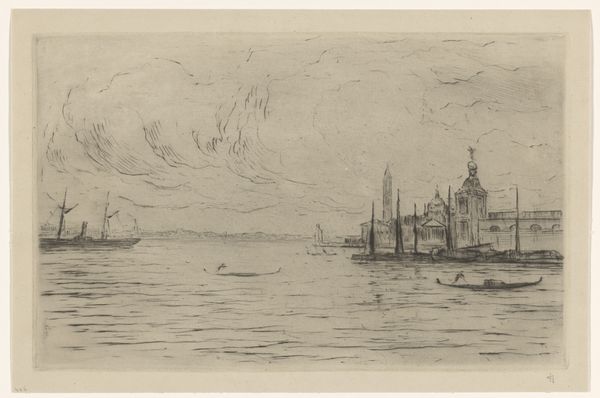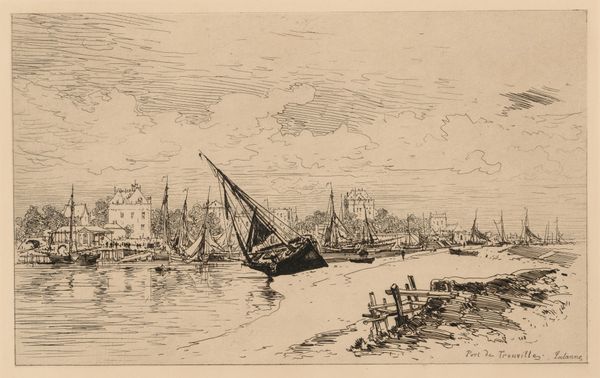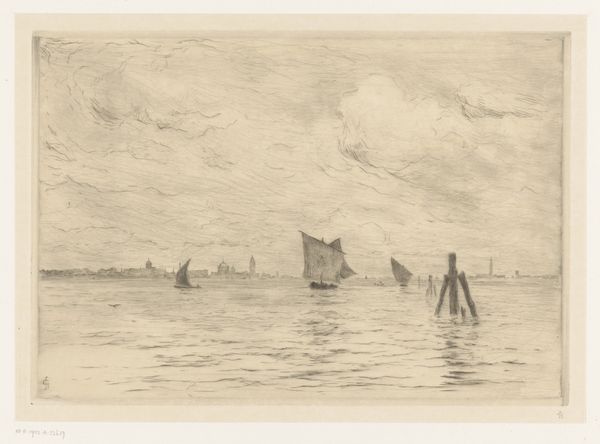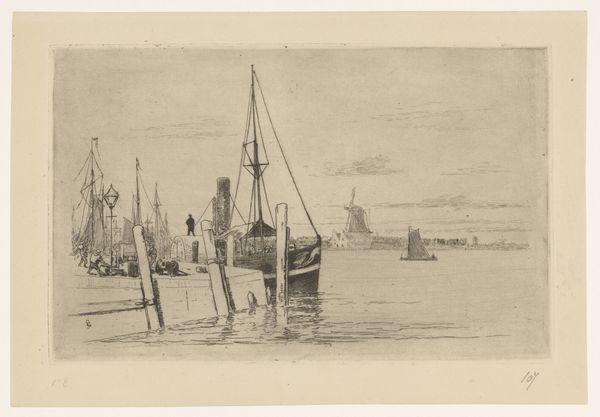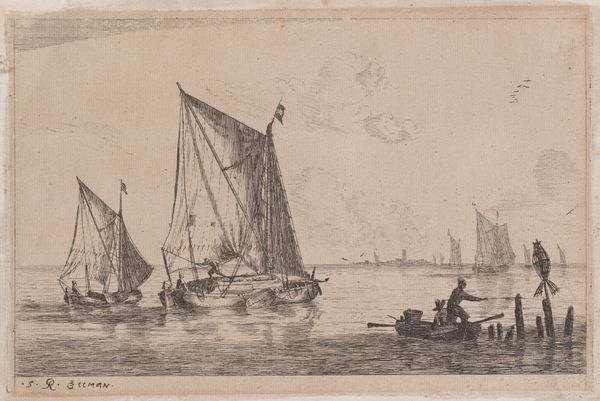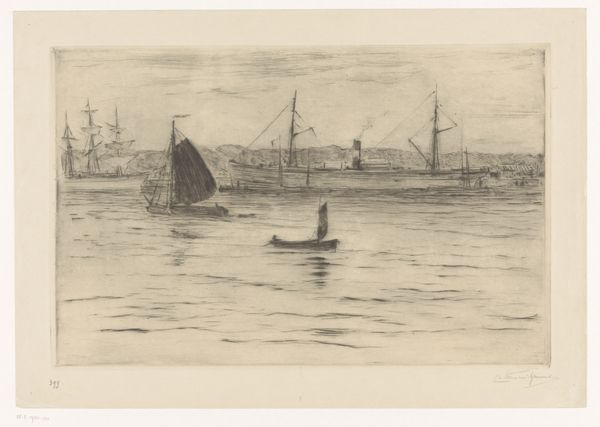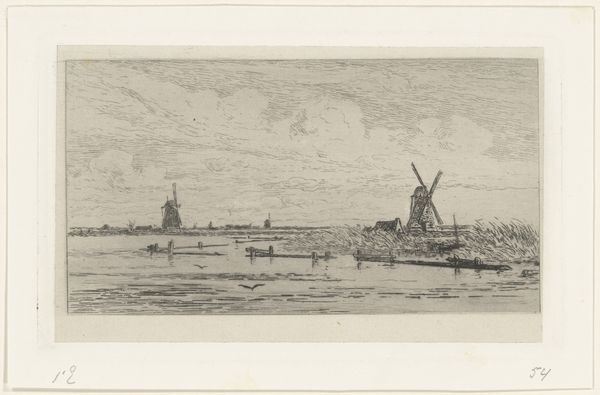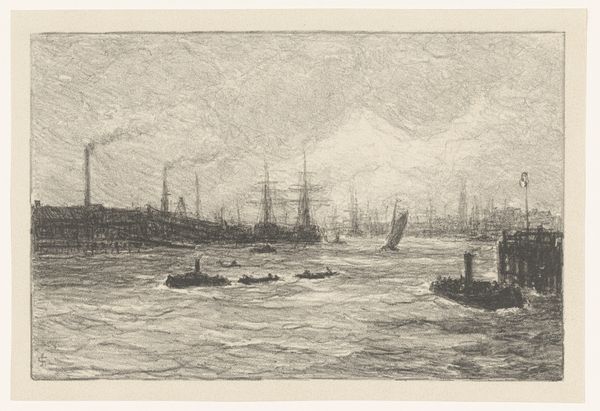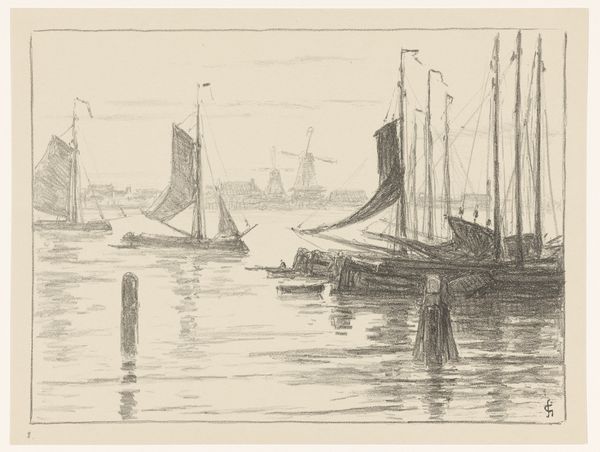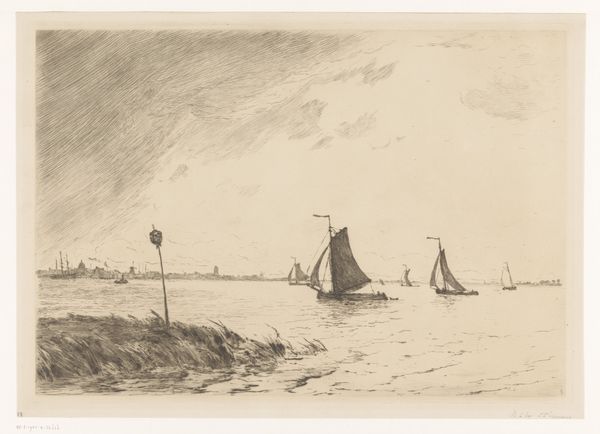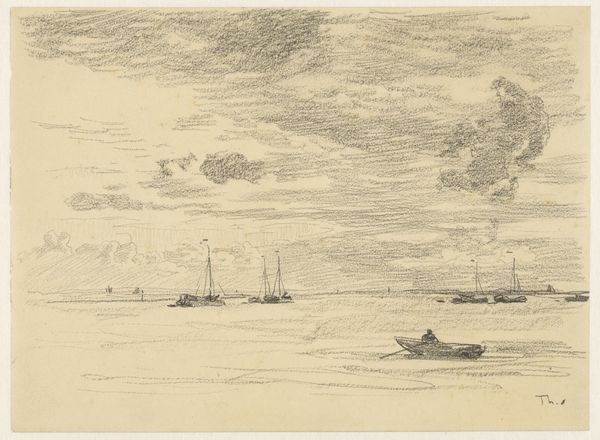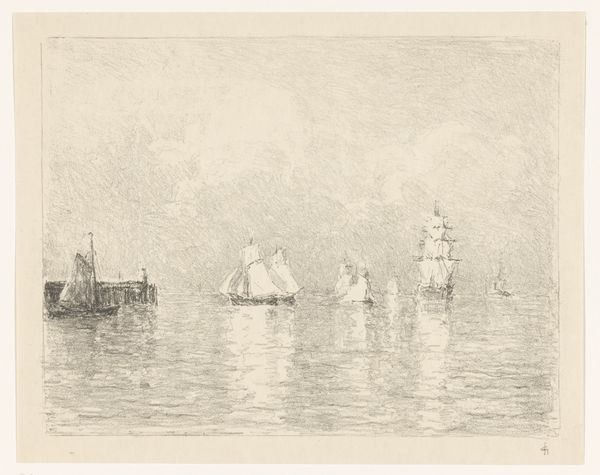
drawing, pencil
#
drawing
#
dutch-golden-age
#
impressionism
#
landscape
#
river
#
pencil
Dimensions: height 267 mm, width 347 mm
Copyright: Rijks Museum: Open Domain
Editor: This is "Stoomboot op de Maas," a pencil drawing by Carel Nicolaas Storm van 's-Gravesande, sometime between 1851 and 1902. The materiality of pencil on paper feels delicate, almost hesitant, yet the subject is these powerful industrial boats juxtaposed against the older sailboats. What do you make of that tension? Curator: That tension you perceive is exactly what makes this piece compelling from a materialist perspective. Note how the artist depicts the steamship, the very symbol of industrial progress and expanded capitalist trade, using a medium as simple as pencil. Consider the social context of the artist: What were his attitudes towards industrialization? Did he see its advance as progress, or a form of labor exploitation, challenging artisanal trades like sailmaking, or both? Editor: That's a fascinating angle! I hadn’t considered the labor aspect directly, focusing more on the visual contrast between the modes of transport. It does feel almost like a eulogy for a disappearing craft, presented through the quickly executed pencil strokes, perhaps echoing the speed of change at the time. Curator: Exactly. The sketch-like quality, the clear evidence of the artist’s hand and process, it directs our attention back to the act of creation itself, to the labor involved in depicting these shifting social dynamics. Notice how he captures light not through colour, but through subtle variations in the pressure and density of the pencil marks. What is the relationship of graphite as a material versus other common art-making material of this era? Editor: It almost democratizes the process. Pencil seems more accessible, less overtly ‘artistic’ than say, oil paint. It allows the depiction of the industrial revolution to feel more…mundane, part of everyday life. It removes that separation of “high art”. Curator: Precisely. It makes you consider the means of production behind both the drawing itself and the subjects it depicts. Art is a business of labor too, and using mundane materials in art can be powerful, reflective of society’s change in general! Editor: This was fascinating! I hadn't considered these intersections of materials, labor and social change within the artwork itself. Thank you!
Comments
No comments
Be the first to comment and join the conversation on the ultimate creative platform.
